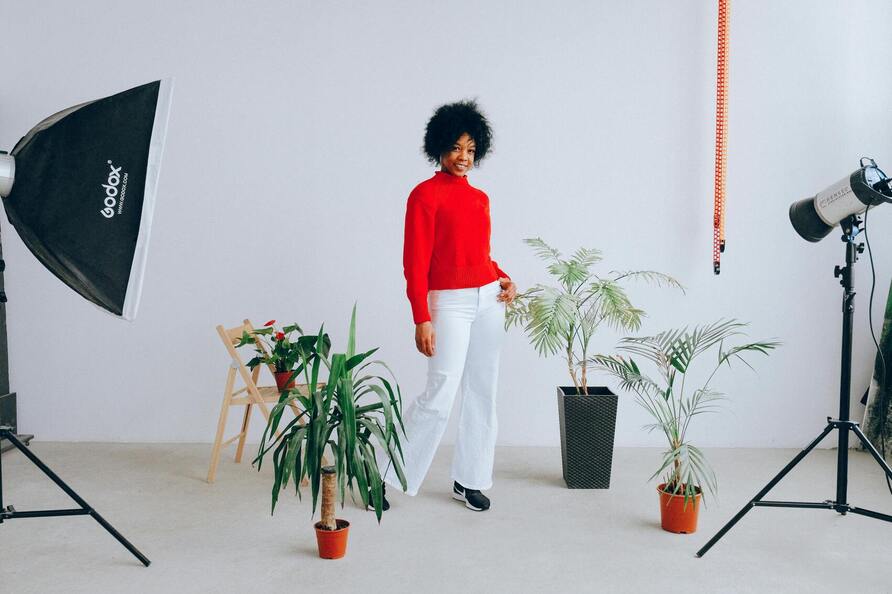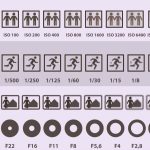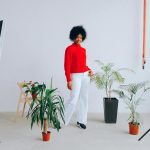Preparing the proper indoor photography settings plays a pivotal role in the photo shoot. It dictates the outcome of the final image. A photographer could capture portraits, still life, or architectural shots. But, a lack of appropriate settings can impair all the efforts.
Indoor photography presents its own unique set of challenges. Photographers could be required to adapt to varying lighting conditions, limited space, and often cluttered backgrounds.
Adequate preparation involves understanding the available lighting conditions, utilizing artificial lighting sources effectively, and selecting appropriate props or backdrops to enhance the composition. Attention to detail in setting up the scene significantly impacts the mood, atmosphere, and storytelling within the photograph.
These challenges are all solvable with a little know-how and creativity. Skilled photographers adeptly navigate these challenges. The meticulous planning and skillful adjustment of settings harness the full potential of indoor environments. The photographer produces compelling and visually striking images with it.
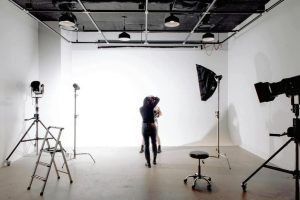
Indoor Photography Lighting
Lighting plays a pivotal role in indoor photography. Photographers often contend with limited natural light. Controlling artificial lighting sources is crucial for achieving compelling indoor shots.
Natural light can still be valuable if windows or openings allow soft, diffused light to filter into the space. This natural illumination can create flattering effects, especially during specific times of the day.
Artificial lighting sources come in two main categories: continuous lighting and flash/strobe lighting. Continuous lighting, such as tungsten, fluorescent, or LED panels, remains illuminated constantly. It offers photographers a real-time preview of how light interacts with the subject.
Flash units or strobe lights, on the other hand, emit brief bursts of intense light, ideal for freezing motion and providing ample illumination in low-light conditions.
Photographers use various modifiers to shape and control artificial light. Softboxes and umbrellas diffuse harsh light and create soft, even illumination. Reflectors bounce light back onto the subject. It helps fill in shadows and enhances brightness. Additionally, modifiers like snoots, grids, and barn doors help control the direction and spread of light. These modifiers allow precise lighting adjustments.
Photographers consider different lighting setups to achieve the desired effect. For example, three-point lighting. It consists of a key light, a fill light, and a backlight. It provides balanced illumination with minimal shadows.
Rembrandt lighting creates a triangle of light on one side of the subject’s face. It helps add depth and drama to portraits. Butterfly lighting, meanwhile, positions the main light source directly in front and above the subject. It casts a small, butterfly-shaped shadow under the nose, often used in beauty and fashion photography for its flattering effect.
Mastering indoor photography lighting requires experimentation and practice. Photographers become skilled by learning how different setups and modifiers influence the mood, atmosphere, and visual appeal of their images.
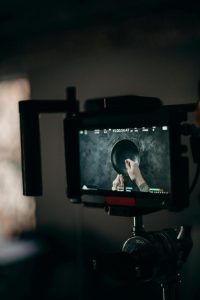
Camera Settings for Indoor Photography
The choice of camera is crucial in capturing the nuances of light, texture, and ambiance within confined spaces.
Digital Single-Lens Reflex (DSLR) cameras are stalwarts in indoor photography due to their versatility and superior image quality. DSLRs offer photographers the flexibility to adapt to various indoor scenarios with their interchangeable lenses and manual controls. The optical viewfinder provides a real-time preview of the scene. It enables precise composition and focus.
Mirrorless cameras have emerged as popular alternatives to DSLRs. Their compact size and lightweight design make them well-suited for maneuvering within tight indoor spaces. These cameras boast advanced features such as electronic viewfinders and in-body image stabilization. These features enhance the shooting experience in low-light environments.
Point-and-shoot cameras are less common among serious photographers. But they still have their place in indoor photography, especially for casual or spontaneous shoots. Their simplicity and portability make them convenient for capturing everyday moments. They are very convenient in indoor settings without the bulk of larger camera systems.
Medium format cameras offer unparalleled image quality and detail. They are mostly used for architectural or interior design projects. Their larger sensors capture intricate textures and subtle lighting nuances with remarkable clarity. They are perfect for showcasing indoor spaces in exquisite detail.
Factors such as sensor size, low-light performance, and autofocus capabilities are paramount when selecting a camera for indoor photography. A camera with a larger sensor size generally excels in capturing fine details. They are also good at handling challenging lighting conditions commonly encountered indoors. Additionally, fast and accurate autofocus is essential for swiftly locking onto subjects. It is essential, particularly in dynamic indoor environments where lighting conditions may change rapidly.
The best camera for indoor photography depends on the specific requirements of the shoot. The requirements include the desired image quality, shooting style, and budget. Each camera type offers unique advantages for capturing the essence of indoor spaces with precision and artistry. Tripod and Remote shutter closer.
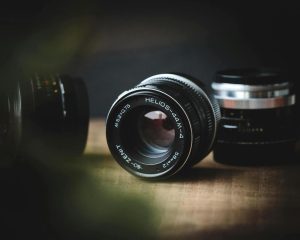
Perfect Lenses for Indoor Photography
Right lenses enable to capture of the desired composition, perspective, and atmosphere within confined spaces.
Wide-angle lenses allow photographers to capture expansive views. It conveys a sense of space within tight quarters. They excel in architectural photography. They can emphasize the grandeur of interiors or showcase intricate details with minimal distortion. Additionally, wide-angle lenses are ideal for capturing group shots or environmental portraits in indoor settings, enabling photographers to include more of the surroundings in the frame.
Standard prime lenses with moderate focal lengths, such as 35mm or 50mm, are versatile choices for indoor photography. Their natural perspective closely mimics the human eye. It makes them well-suited for capturing scenes with a lifelike feel. Standard primes are ideal for indoor events, portraits, or still-life subjects. It provides a balanced perspective and excellent image quality even in low-light conditions.
Telephoto lenses may seem less common in indoor photography, but they have their place. It is perfect for capturing distant subjects or isolating details within a larger scene. It works perfectly in indoor sports events or performances. Telephoto lenses enable photographers to zoom in on the action without disrupting the atmosphere. It captures compelling moments from a distance.
Macro lenses offer a unique perspective. It allows photographers to explore the intricate details and textures of small subjects. It can capture close-up shots of flowers, food, or decorative elements within indoor environments. Macro lenses excel at revealing the beauty and intricacy often overlooked by the naked eye. They have close focusing capabilities and shallow depth of field. These features enable photographers to create striking images with stunning clarity and selective focus.
Low-light lenses with wide apertures, such as f/1.8 or f/1.4, are indispensable for indoor photography. These lenses are good where lighting conditions may be challenging. These fast lenses gather more light, allowing photographers to shoot handheld in dimly lit environments without compromising image quality. Low-light lenses offer unparalleled versatility and creative potential in capturing intimate portraits, atmospheric scenes, or ambient light in indoor settings.
The best lens for indoor photography depends on the specific requirements of the shoot. Those requirements include the desired perspective, depth of field, and lighting conditions. Before the selection, understanding the unique characteristics of different lenses and how they contribute to the overall aesthetic of indoor images is mandatory.
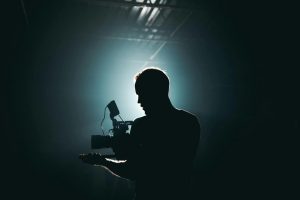
The Role of Backdrops in Indoor Photography
In indoor photography, the importance of backdrops transcends mere practicality. It extends into the realms of aesthetics, composition, and storytelling. Backdrops are not just backgrounds; they are integral components that shape the narrative, mood, and focus of photographs.
The backdrop creates a controlled environment for the photoshoot. It helps photographers contend with unpredictable lighting conditions of indoor photoshoot locations and distracting elements. They are like a blank canvas. Photographers can meticulously craft their compositions. It ensures that the focus remains squarely on the subject at hand.
A well-chosen backdrop can elevate the mood, evoke emotions, and convey a sense of style or sophistication. A minimalist white backdrop imparts a sense of purity and elegance to a portrait. A richly textured backdrop imbues the image with warmth and character. A carefully selected backdrop can frame the subject in a flattering light, enhancing their presence and allure.
They serve as blank canvases upon which photographers can experiment with different themes, concepts, and visual styles.
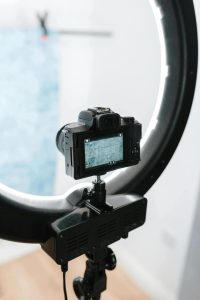
Tips and Techniques to Capture Stunning Photos Indoors
Master the Light
- Harness Natural Light: Make the most of window light. Diffused light on cloudy days or indirect sunlight during midday through curtains creates flattering, soft light. Position yourself and your subject near the window for even illumination.
- Bounce It: Reflectors are your friends! They bounce light back onto your subject, reducing harsh shadows and brightening the overall look. Experiment with white, silver, or gold reflectors depending on the desired warmth or coolness of the light.
- Embrace Artificial Light: Don’t be afraid to use lamps, overhead lights, or even string lights creatively. Play with positioning the lights to achieve different effects. You can use softboxes to diffuse harsh light or colored gels to add a pop of color.
- Befriend the Tripod: Indoor lighting often requires slower shutter speeds to capture enough light. A tripod ensures sharp images by eliminating camera shake.
Composition is Key
- Fill the Frame: Get close to your subject to fill the frame and eliminate distracting background clutter.
- Leading Lines: Look for lines in the environment, like shelves or doorways, that lead the viewer’s eye into the photo and add depth.
- Rule of Thirds: Imagine dividing your frame into a 3×3 grid. Place your subject at one of the intersecting points for a more balanced and visually pleasing composition.
Embrace the Details
- Find Unique Angles: Don’t just shoot eye-level! Experiment with low angle or high angle shots to add interest and tell a different story.
- Foreground Interest: Include foreground elements to add depth and dimension to your photos. This could be a plant, a book, or anything that complements your subject.
- Background Matters: While you can often blur the background, pay attention to it. A clean background avoids distractions and makes your subject pop.
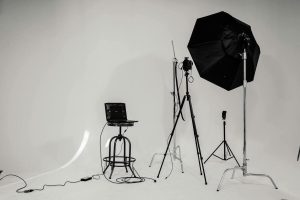
Bonus Tip: Explore Post-Processing
Editing software allows you to fine-tune white balance, adjust exposure, and enhance details to bring out the best in your indoor photos. You can also do post-processing work from professional photo editing services.
By understanding how to control light, using the right camera settings for indoor photography, and applying creative composition techniques, you can transform your indoor photography and capture captivating images within the confines of your home or any indoor photography settings.

